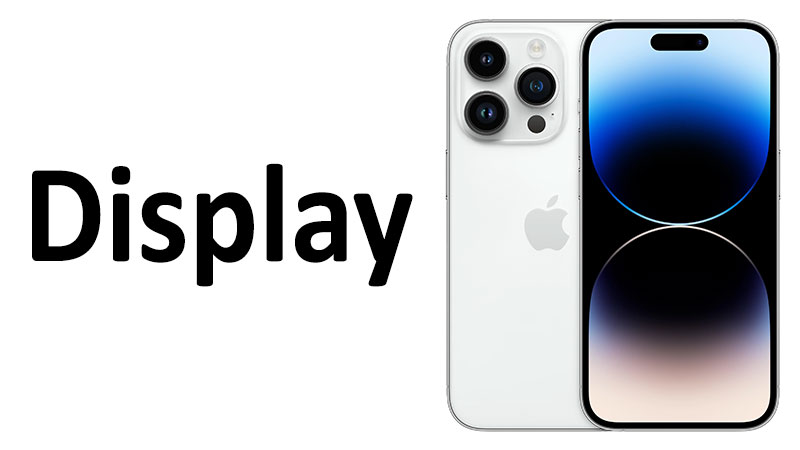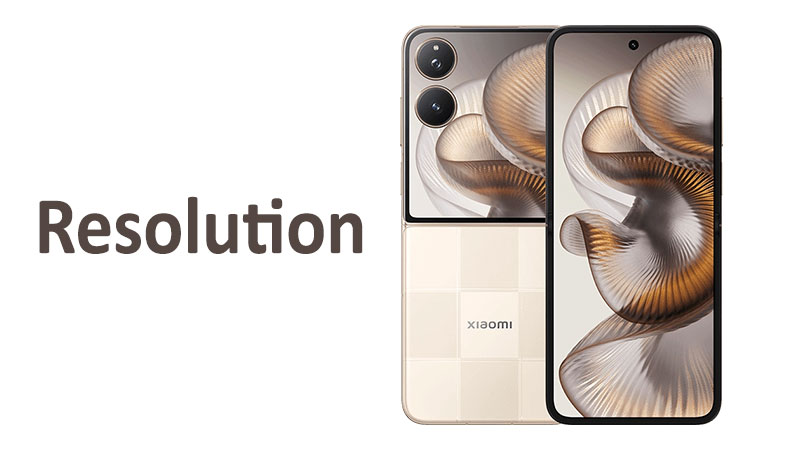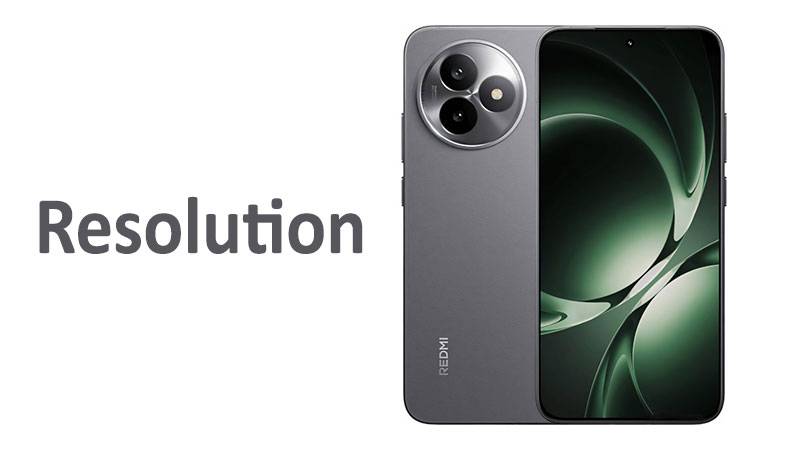The Apple iPhone 14 Pro display represented a monumental shift in smartphone screen technology when it launched. It delivered significant upgrades in both hardware and software integration. We will conduct a thorough analysis of its key specifications, impressive resolution, and overall quality. This review aims to give potential buyers and technology enthusiasts all the details they need about this sophisticated LTPO Super Retina XDR OLED panel. It changed the way users interact with their device, moving past static notches toward dynamic, informative experiences.
Technical Specifications: The Foundation of Excellence
The iPhone 14 Pro display is a powerhouse of visual engineering. It blends established Apple display quality with groundbreaking new technologies. The 6.1-inch panel offers a brilliant visual experience. Its size remains manageable for one-handed use while still providing ample screen real estate. Understanding the core specifications reveals why this display achieved such high praise for quality and performance.
Display Type and Panel Technology
The iPhone 14 Pro uses a LTPO Super Retina XDR OLED panel. OLED technology provides perfect blacks and infinite contrast ratios. This is because each pixel emits its own light and can be completely switched off. Apple’s Super Retina XDR branding signifies exceptionally high dynamic range capabilities. It means the display handles extreme differences between the brightest whites and the deepest blacks with remarkable accuracy.
LTPO stands for Low-Temperature Polycrystalline Oxide. This specialized backplane technology is crucial for power efficiency. It allows the display to modulate its refresh rate dynamically. This modulation is what enables the high-end features like ProMotion and the Always-On Display. The LTPO technology is a fundamental enabler of the 14 Pro’s efficiency improvements.
Resolution and Pixel Density
The display features a precise resolution of 1179 x 2556 pixels. This translates to an aspect ratio of 19.5:9. This slightly taller aspect ratio is common in modern smartphones. It provides a better viewing experience for scrolling through content. It also optimizes screen usage for multitasking.
This resolution on a 6.1-inch screen results in a pixel density of approximately 460 pixels per inch, or ppi. A 460 ppi density is considered exceptionally high. Individual pixels are invisible to the naked eye at normal viewing distances. This ensures that text appears razor-sharp, photos are highly detailed, and vector graphics are smooth. The sharpness contributes significantly to the premium visual quality of the device.
Refresh Rate: ProMotion and Adaptive Scaling
The iPhone 14 Pro utilizes Apple’s ProMotion technology. This technology allows the display to achieve an adaptive refresh rate up to 120Hz. The 120Hz peak refresh rate makes motion look incredibly fluid. Scrolling through web pages, navigating the operating system, and playing high frame-rate games feel exceptionally smooth and responsive.
The adaptive aspect is perhaps more important than the peak rate. The display can scale its refresh rate down significantly. It drops as low as 10Hz for static content like reading an article. Crucially, it drops down to just 1Hz for the new Always-On Display feature. This dramatic reduction in refresh rate when the screen is idle is key to conserving battery life while enabling advanced display features.
Groundbreaking Display Features: Dynamic Island and Always-On Display
Two core software and hardware integrations differentiate the iPhone 14 Pro display from its predecessors. These features fundamentally change user interaction. They optimize how the phone handles notifications and idle states.
The Dynamic Island Innovation
The Dynamic Island replaces the traditional notch cutout found on previous iPhones. It is a pill-shaped area at the top of the display. This area houses the TrueDepth camera system and Face ID components. The true innovation is the seamless fusion of hardware and software.
The Dynamic Island dynamically changes its size and shape. It morphs to display important alerts, notifications, and ongoing background activities. It intelligently expands when a phone call comes in, music is playing, or a timer is running. It becomes a central information hub without interrupting the content on the main screen.
Users can interact with the Dynamic Island. A simple tap often opens the associated app. A long press can reveal expanded controls, such as media playback buttons or a running timer interface. This feature transforms a formerly static dead zone into a usable, engaging part of the operating system.
Always-On Display (AOD)
The Always-On Display was a significant addition to the iPhone 14 Pro series. It allows the screen to show the time, widgets, and the user’s Lock Screen wallpaper in a dimmed state. This happens without requiring the user to tap or lift the phone. The AOD is enabled by the display’s LTPO technology.
The AOD operates at a refresh rate as low as 1Hz. This dramatically minimizes power consumption. Unlike some Android competitors that show only monochromatic text and symbols, the iPhone’s AOD retains full color and brightness of the wallpaper. This is done with reduced brightness levels. It provides glanceable information while maintaining the personalization of the Lock Screen.
Brightness and High Dynamic Range (HDR) Performance
Brightness is one of the most critical upgrades the iPhone 14 Pro display brought to the table. The capability to achieve extremely high brightness levels makes the screen usable in challenging lighting conditions. It also enhances the visual impact of HDR content.
Peak Brightness Levels
The display offers three key brightness metrics. For typical, daily use, the maximum brightness is rated at 1000 nits. Nits is the unit of measure for luminance. When viewing high-dynamic range content, such as Dolby Vision videos, the peak brightness rises to 1600 nits. This provides intense highlights and greater depth to movies and TV shows.
The biggest leap comes in High Brightness Mode, or HBM, for outdoor use. The iPhone 14 Pro can achieve an astonishing 2000 nits of peak brightness outdoors. This doubles the brightness capability of the previous iPhone 13 Pro model. This extreme brightness is a literal game-changer for visibility. Reading messages or composing photos under direct, bright sunlight becomes significantly easier and less frustrating.
HDR Support: Dolby Vision and HDR10
The iPhone 14 Pro fully supports both HDR10 and Dolby Vision standards. Dolby Vision is Apple’s preferred HDR format. It uses dynamic metadata to optimize the picture quality scene-by-scene. The combination of high peak brightness and wide color gamut support results in exceptional video playback quality. Colors are vibrant, details in shadows are preserved, and bright areas pop with realism. The contrast ratio is rated at 2,000,000:1. This confirms the display’s capability for true-to-life representation of content.
Color Accuracy and Visual Quality
Apple consistently sets the benchmark for color accuracy in mobile displays. The iPhone 14 Pro upholds this tradition. Color fidelity is essential for professional users like photographers and video editors. It is also important for general content consumption.
Wide Color (P3) and True Tone
The display supports the Wide Color (P3) gamut. This is a larger color space than the standard sRGB gamut. It allows the display to render a much broader range of colors, particularly greens and reds. This feature is vital for displaying high-quality photographic and cinematic content accurately.
The True Tone technology is another core feature. It uses advanced ambient light sensors to measure the color temperature and intensity of the surrounding light. The display then dynamically adjusts its white balance to match the environment. This makes the images on the screen appear more natural and less strained, reducing eye fatigue.
Contrast and Deep Blacks
As an OLED panel, the iPhone 14 Pro delivers perfect black levels. When a pixel is instructed to display black, the corresponding diode turns off completely. This results in an absolute black. This deep, inky black is the foundation for the display’s extraordinary contrast ratio. It provides photos and videos with a three-dimensional depth that LCD screens cannot replicate.
Durability and Protection
A high-end display requires robust protection. The iPhone 14 Pro display is shielded by the Ceramic Shield glass. Apple co-developed this material with Corning.
Ceramic Shield Technology
The Ceramic Shield is infused with nano-ceramic crystals. These crystals are actually harder than most metals. This makes the screen glass significantly tougher than conventional smartphone glass. It offers improved resistance to scratches from daily use. Most importantly, it dramatically increases drop performance compared to older iPhone models. This protective layer ensures the exceptional visual quality of the LTPO Super Retina XDR display remains pristine over time.
Oleophobic Coating
The glass also features a fingerprint-resistant oleophobic coating. This coating helps to repel oils and smudges from fingers. It keeps the screen clearer and easier to wipe clean. Maintaining clarity is crucial, especially when viewing the screen outdoors in bright light.
Specialized Comparisons and Competitive Landscape
A display review is incomplete without understanding how the iPhone 14 Pro stacks up against its rivals and predecessors. This provides necessary context for its feature set.
iPhone 14 Pro vs. iPhone 13 Pro Display
The jump from the iPhone 13 Pro to the 14 Pro display included three key changes. First, the 14 Pro introduced the Dynamic Island, replacing the static notch. Second, it added the 1Hz Always-On Display functionality. The 13 Pro only scaled down to 10Hz. Third, the 14 Pro’s peak outdoor brightness nearly doubled, going from approximately 1000 nits on the 13 Pro to 2000 nits. While both use ProMotion, the 14 Pro offered better low-refresh-rate efficiency.
The resolution saw only a very slight bump, but the user experience was revolutionized by the Dynamic Island and the increased visibility outdoors. The 14 Pro display is a clear generational leap, not just a minor iteration.
Comparison with Flagship Competitors
The primary competitor for the iPhone 14 Pro screen is typically Samsung’s Ultra series, such as the Galaxy S23 Ultra or S24 Ultra. Samsung displays often push slightly higher peak brightness numbers in specific tests. They usually offer more display customization options in the software.
However, the iPhone 14 Pro excels in color accuracy and calibration straight out of the box. Apple prioritizes color consistency across its ecosystem. While Android displays may sometimes appear more vivid, the iPhone 14 Pro’s panel is arguably more color-accurate and true to standard color spaces like P3. The Dynamic Island remains a unique software-hardware integration that competitors cannot match directly.
Pros and Cons for the Prospective Buyer
Understanding the strengths and weaknesses of the display helps potential buyers make an informed decision.
Pros of the iPhone 14 Pro Display
The brightness is phenomenal, making the phone perfectly usable in direct sunlight. This is a major practical benefit. The Dynamic Island is a creative and fun solution that transforms the notch area into a productivity tool. ProMotion technology delivers silky-smooth scrolling and animations across all applications. The Always-On Display provides quick and convenient access to essential information. Color accuracy is industry-leading, making this a reliable display for professional photo and video work.
Cons of the iPhone 14 Pro Display
The cost of the device is significantly higher due to its Pro designation. The Always-On Display, while useful, causes a noticeable impact on battery life. This is true even at the efficient 1Hz refresh rate. Some users initially find the Dynamic Island distracting. This is especially true when watching full-screen videos, where it is more noticeable than the traditional notch. The 6.1-inch size, while manageable, might feel too small for users who consume a large amount of media.
Important Considerations for Buyers and Readers
Anyone considering the iPhone 14 Pro must understand a few key implications of this advanced screen technology. These points relate to daily use and long-term device maintenance.
Battery Consumption and AOD
The efficiency of the LTPO panel is remarkable, but the Always-On Display still uses power. If you prioritize maximum battery life, you can disable the AOD feature in the settings. This reverts the phone to the traditional black screen standby. Disabling the AOD will noticeably extend the device’s battery longevity.
Durability and Repair Cost
The Ceramic Shield offers excellent protection against drops and scratches. However, it is not impervious to damage. Because the display technology is complex and highly integrated, screen repair costs are substantial. Investing in a quality screen protector and a protective case is strongly recommended. This preventative measure protects a valuable component of the device.
The Dynamic Island Learning Curve
The Dynamic Island requires a short adjustment period. Users familiar with the static notch may need time to adapt their muscle memory. They will learn to interact with this new, expanding UI element. Once mastered, the Dynamic Island significantly streamlines multi-tasking and notification management. It becomes an intuitive part of the iOS experience.
Display Quality Consistency
Apple maintains strict quality control over its panels. This ensures excellent uniformity in brightness and color across units. Users can rely on receiving a display that adheres closely to industry standards for color reproduction and brightness specifications. This consistency makes the iPhone 14 Pro a favorite among creative professionals.
The Overall User Experience
The quality of the display directly influences the overall user experience. The iPhone 14 Pro display ensures every interaction is enjoyable.
Gaming and Entertainment
The 120Hz ProMotion technology is highly beneficial for mobile gaming. High frame rate games run incredibly smoothly, offering a competitive advantage and a more immersive experience. The Dolby Vision support and high brightness levels make watching movies on streaming services exceptional. The size of the screen is immersive enough for media consumption without being unwieldy in the hand.
Reading and Productivity
The high 460 ppi resolution ensures text is crisp and clear. This makes reading lengthy articles or documents comfortable. True Tone technology further aids in reading by adjusting the white point for optimal comfort. The adaptive refresh rate ensures a smooth scrolling experience. This makes long periods of research or browsing much less strenuous on the eyes.
Conclusion: Is the iPhone 14 Pro Display Worth It?
The Apple iPhone 14 Pro display is a triumph of engineering and user-centric design. It takes Apple’s already excellent Super Retina XDR OLED technology and pushes it to new heights. The massive increase in peak brightness makes outdoor visibility unparalleled. The introduction of the Dynamic Island successfully transforms a hardware necessity into a functional software feature. The 1Hz Always-On Display brings the iPhone into parity with competitors while adding a unique, rich visual style.
The display quality, defined by its 1179 x 2556 resolution, 460 ppi density, and perfect color calibration, is simply superb. For users upgrading from an iPhone 12 or earlier, the 120Hz ProMotion is a revelation. For those upgrading from the 13 Pro, the Dynamic Island and extreme brightness are compelling reasons to switch. The iPhone 14 Pro display delivers an experience that is brighter, smoother, more interactive, and more visually accurate than almost any other smartphone screen on the market. It set a new standard for flagship mobile displays.
Frequently Asked Questions (FAQ)
What is the major difference between the iPhone 14 and the 14 Pro display?
The iPhone 14 Pro display includes the advanced ProMotion technology. This allows for an adaptive 1Hz to 120Hz refresh rate. The standard iPhone 14 display is limited to a fixed 60Hz refresh rate. The Pro model also features the Dynamic Island and significantly higher peak brightness.
Does the Dynamic Island take up more screen space than the old notch?
The Dynamic Island is a smaller physical cutout than the old notch. However, the software animations expand the area when it is active. This can temporarily obscure content directly beneath it. The overall design occupies less vertical space than the notch but integrates more dynamically.
What is the function of the LTPO technology in the display?
LTPO stands for Low-Temperature Polycrystalline Oxide. It is a backplane technology that allows the display to efficiently change its refresh rate on the fly. This flexible rate scaling is essential for ProMotion and for dropping the rate down to 1Hz for the Always-On Display to save power.
How bright is the iPhone 14 Pro screen for outdoor use?
The iPhone 14 Pro display can achieve a peak outdoor brightness of up to 2000 nits. This makes it one of the brightest smartphone screens available at its launch. This high brightness significantly improves readability and usability under direct sunlight.
What does the Ceramic Shield glass protect against?
Ceramic Shield glass is designed to increase the durability of the screen. It offers superior protection against major impacts and drops compared to standard smartphone glass. It also provides better resistance to micro-scratches from everyday use.



